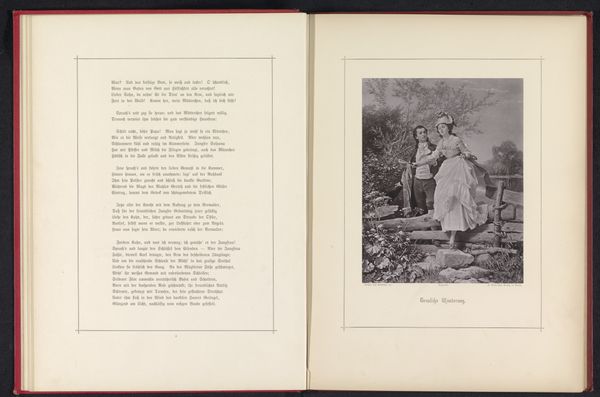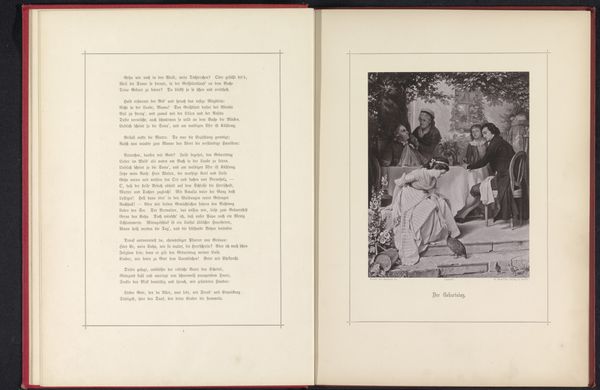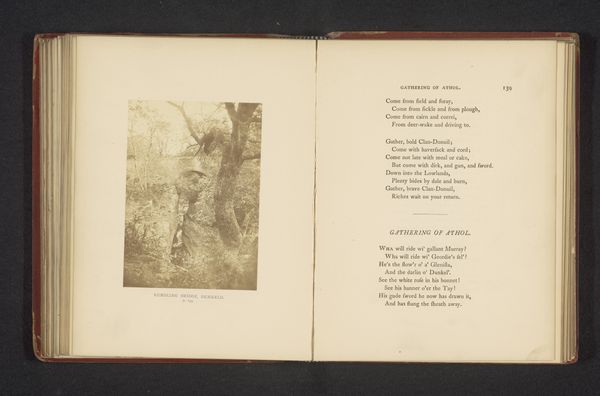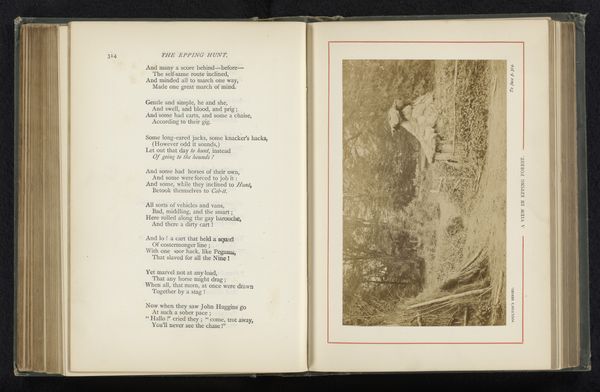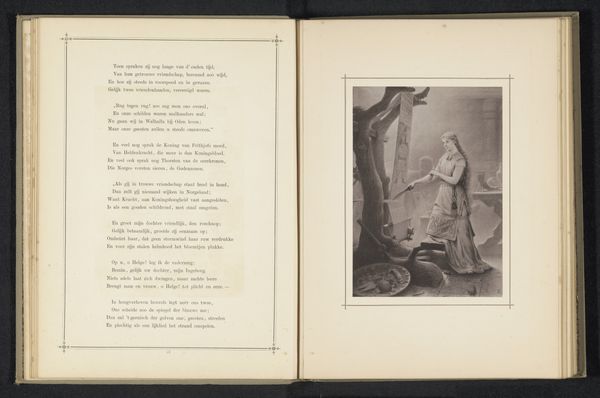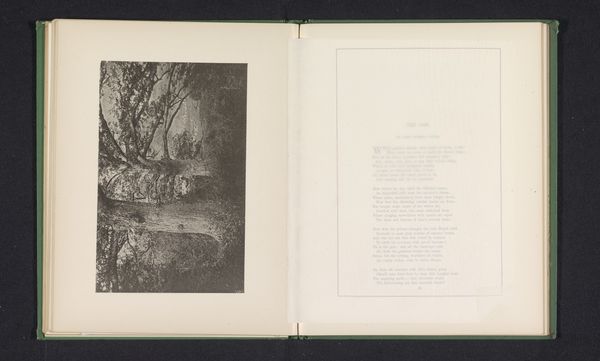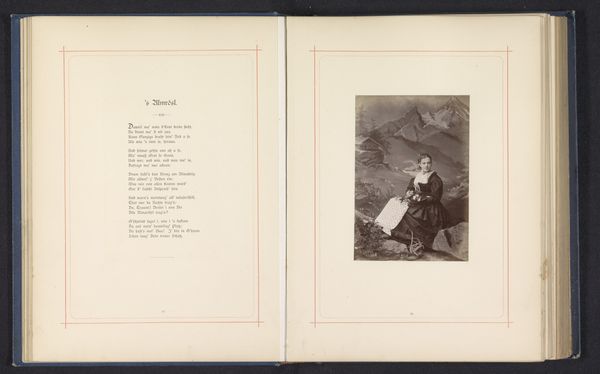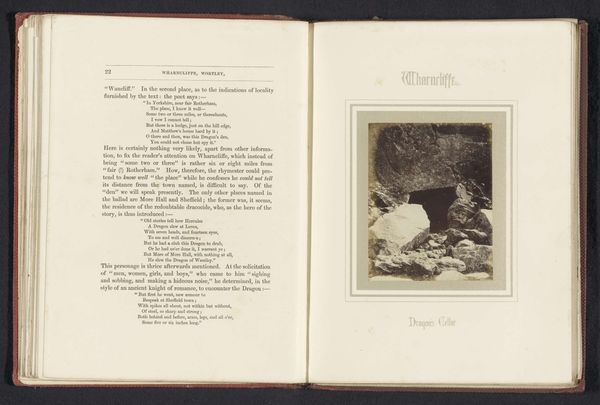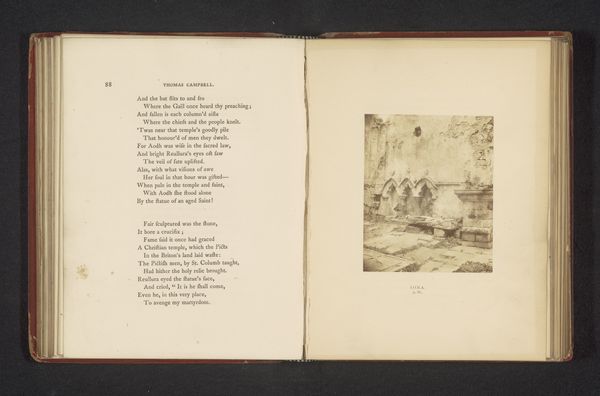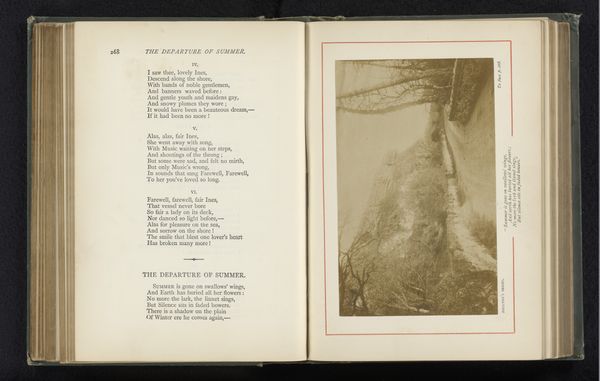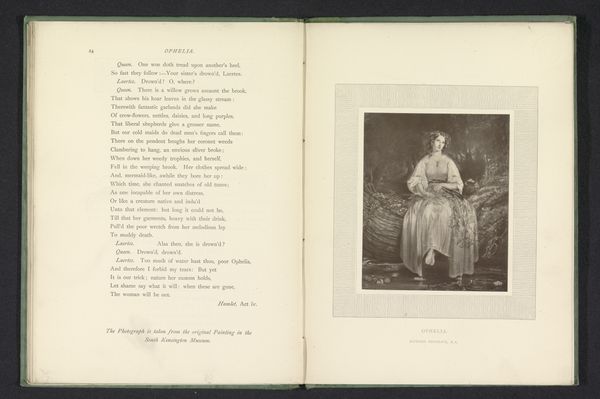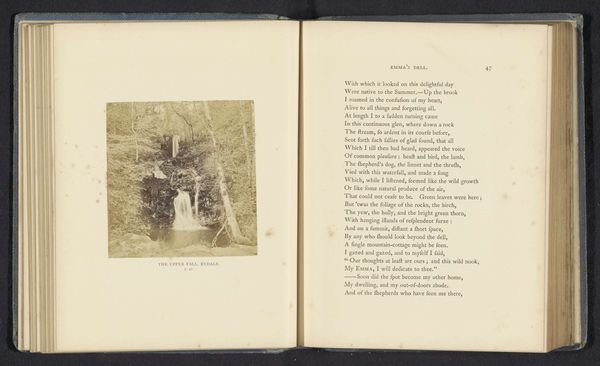
Fotoreproductie van een schilderij van een vrouw bij een kampvuur en een gezelschap onder een boom before 1884
0:00
0:00
#
script typeface
#
aged paper
#
script typography
#
hand drawn type
#
hand-drawn typeface
#
thick font
#
handwritten font
#
delicate typography
#
golden font
#
historical font
Dimensions: height 201 mm, width 157 mm
Copyright: Rijks Museum: Open Domain
Editor: This photomechanical print from before 1884 shows a woman by a campfire. The tones are muted, almost melancholic, like a memory fading with time. What cultural symbols or historical connections jump out at you in this image? Curator: The campfire, of course, has always been a potent symbol, hasn’t it? It represents community, storytelling, warmth, and the cyclical nature of life. The woman seems to be moving away from the group under the tree, near the water – a transitional figure perhaps, severing ties with community, moving to the margins. Do you see any resonance in the imagery and in these hand-drawn typographies that reinforce these themes? Editor: It does give the sense of moving from one stage of life to another, like she is walking away from the safe comfort of her community, literally moving on to write her own story elsewhere. Curator: Yes. Water often signifies change, purification, the subconscious. And note her attire; it seems almost ceremonial. Perhaps a ritualistic shedding of one identity to embrace another? Fire destroys but also purifies, clears the path. The landscape is itself marginal - between civilization and nature, past and future. Do you agree? Editor: Absolutely. It’s interesting how the artist captured such nuanced emotionality with just a photomechanical print. It is amazing how those simple archetypal representations, like fire and water, create the deepest and sometimes opposing meaning. Curator: Yes, and remember these cultural memory cues give powerful resonance as people’s lives and histories reflect shared symbolism.
Comments
No comments
Be the first to comment and join the conversation on the ultimate creative platform.
